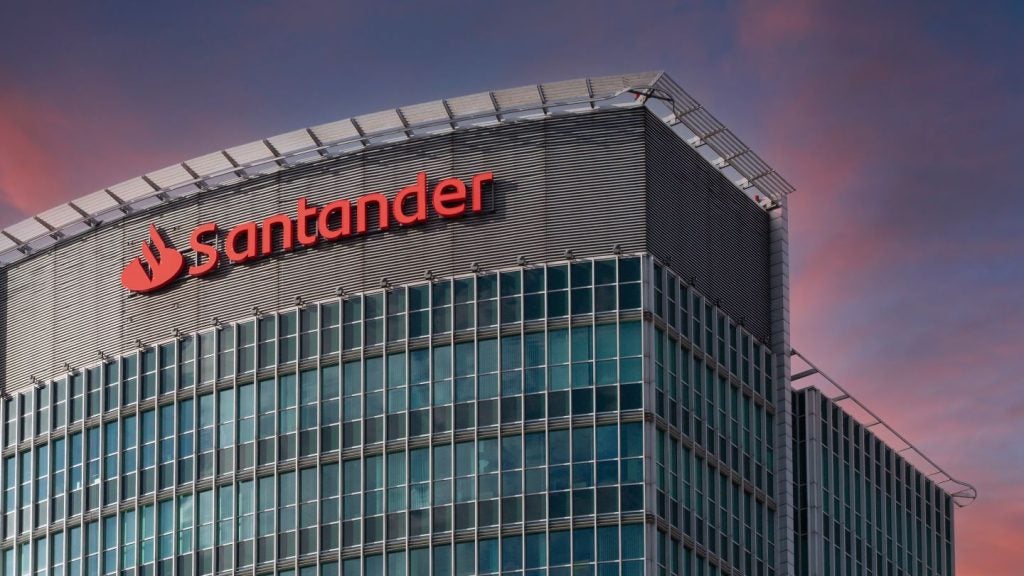A resilient set of first-half results from Santander’s Spanish
retail subsidiary Banesto confirmed it is better placed than its
peers in terms of asset quality and efficiency. Juan Delibes, the
bank’s CFO, argues it remains well placed to continue performing
better than its competitors, reports Douglas
Blakey.
Santander’s prudent and conservative business strategy, focusing on
cost-conscious retail banking while avoiding derivatives and
subprime lending, is paying off not just in its international
operations but also in its domestic market.
Banesto, a major Spanish retail bank in which
Santander has a near 90 percent stake, posted an analyst-beating
set of results for the first half of the year. The
1,819-branch-strong Banesto constitutes less than 10 percent of
group assets but its first-half performance contributed net profit
of €410 million ($583 million), down only 8.8 percent on the
previous year, to a banking group forecast to be the world’s most
profitable this year outside of China.
Highlights included more than 11 percent
growth in Banesto’s net interest income to €859.2 million, a lower
than expected increase in its non-performing loan (NPL) ratio (to
2.32 percent, 66 basis points below the industry average) and a
further reduction in an already impressive cost income ratio to
39.8 percent.

Banesto also scored a hit with a further rise
in its cross-sell ratio to 4.6 retail banking products per
customer, up from 4.0 little more than two years ago. In the same
period, total retail customers increased by around 1 million.

US Tariffs are shifting - will you react or anticipate?
Don’t let policy changes catch you off guard. Stay proactive with real-time data and expert analysis.
By GlobalDataA major part of the bank’s strategy has been
to increase marketing and product innovation with a view,
primarily, to cross-sell more group products. And despite a souring
Spanish economy – Spanish GDP shrank in the first quarter by 2.9
percent on the year-earlier period, its biggest fall in over 40
years – the bank’s CFO, Juan Delibes, told RBI Banesto can
meet a cross-sell target of 5.0 by next year.
He is adamant Banesto is better placed than
its peers in terms of asset quality and efficiency, allowing it to
deal with deteriorating market conditions. “It is a matter of
culture – there is a culture of profitability. I have always
thought that efficiency is our main competitive strength in such a
mature market as Spain,” said Delibes. “Only if we work at lower
costs can we have a competitive advantage.”
Banesto has rationalised its branch network,
closing around 90 branches in the past year while increasing its
agency network to over 200, to give it more than 2,000 sales points
in the country. Ten years ago, Banesto trailed its peers in terms
of efficiency. Now, says Delibes, it is among the best
performing.

He does not accept that Spain as a country is
overbanked – the European Central Bank reported in March that Spain
has the most branches per one million residents (see RBI
614) – although he concedes that branch density is high. “It
is important to understand that administrative and back office
functions are fully automated. The average branch has only three
employees and they have a commercial function – their task is to
sell,” he explained.
“Our strategy is to maintain the number of
sales points. However, some branches do not offer enough
profitability, so we replaced them with independent agents that
give us a point of sale at variable cost, but enables us to
maintain the bank’s positioning in the market.”
Increasing use of the bank’s direct channels
has helped to drive down costs, with alternative channels
accounting for one-third of all transactions, compared with 20
percent in 2002.
The bank’s mortgage products have been the
main driver of the increased cross-sell figure despite a weakening
of the home loans market. Banesto is also enjoying success with its
payroll account and flat-fee packaged current account – an
innovation introduced three years ago of which Delibes is
particularly proud. “Clients pay a flat fee instead of paying
different fees for different core products – it has worked well and
produced new customers,” he said.
Promotion of the payroll account has been
fronted by the bank’s brand ambassador, the celebrated Spanish
tennis star Rafael Nadal.
“Using his image in the campaigns to support
the payroll account has produced good results, with 300,000 new
accounts in 2008 and in 2009 we are already ahead by 140,000,”
Delibes said.
Looking ahead, Delibes argues that Banesto’s
sharpened focus on raising customer service levels will pay off. In
2004, it established a model, called Q10, with more than 2,000
indicators to measure the level of service offered and customer
satisfaction. “It is integrated into the day-to-day management of
the bank and it is part of how we measure the management of our
branches. Already, it is enabling us to grow sales and at a lower
cost.”
In terms of parent Grupo Santander, with whom
Banesto competes against head-on in the consumer banking market,
Delibes says the area of overlap is small. “Banesto’s share in the
Spanish financial services’ sector is 4 percent, Santander has
around 8 percent to 9 percent, so we have a combined 12 percent or
13 percent, giving us a huge market of over 85 percent to gain and
to capture. We are well placed for that,” he concluded.







